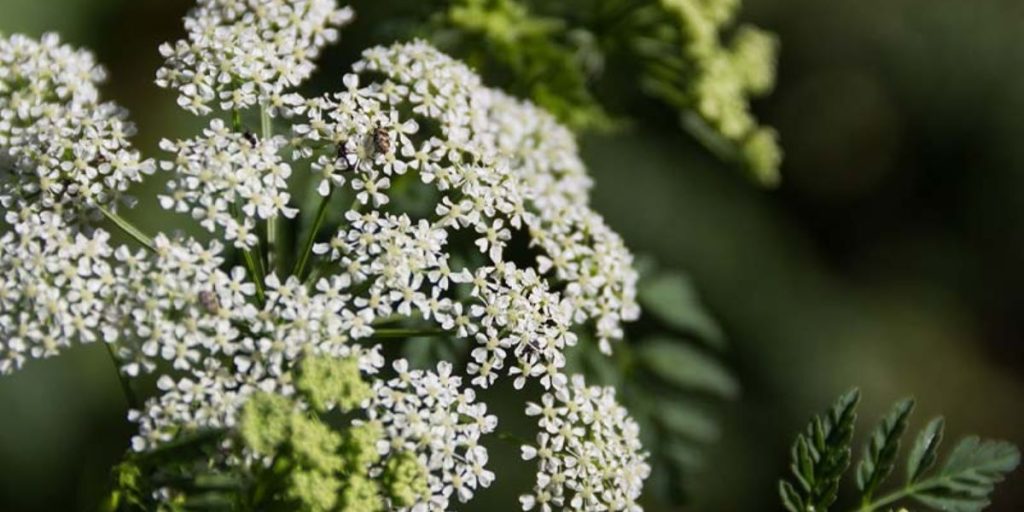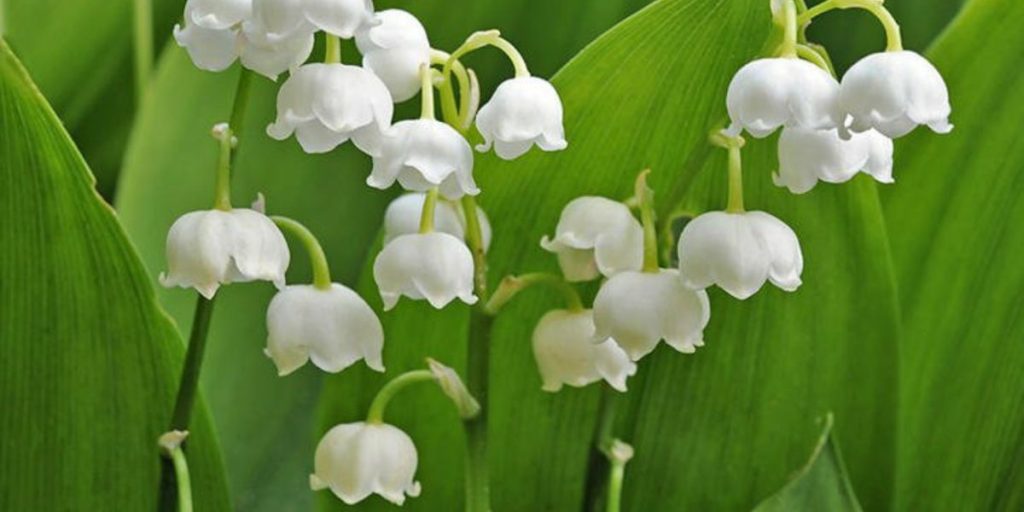Oklahoma’s climates range from arid in the west to humid, practically subtropical in the east, despite its small size. It has a large variety of plants, most of which are harmless and ornamental. Some are edible and useful, while others are harmful, as we’ll see later. Here are seven of Oklahoma’s most deadly plants, their appearance, and where they thrive.
Hemlock poison, Conium maculatum
The biennial, herbaceous poison hemlock may be Oklahoma’s most hazardous plant. Yes, all parts of hemlock are harmful, especially its coniine-rich roots and seeds. Due to the hemlock’s resilience and vast range, coniine, a highly poisonous chemical component, kills calves and sheep.
One adult can die from eating six to eight leaves of this plant. Inhaling or touching this toxic carrot family member can also poison.
Poison hemlock has dark green, finely split triangular leaves and grows 5–8 feet tall. Purple and crimson dots cover its stems. Small, white blooms in circular clusters appear in their second year of growth.

Castor Bean/Oil Plant (Ricinus communis)
Due to its high ricin content, Oklahoma bans castor bean cultivation. It is adaptable, hardy, and spreads quickly, so you may still find it in the state if you’re unlucky. Although its form varies, this shrub-like plant can grow to over 30 feet tall. Long, glossy, serrated dark green leaves average 6 to 18 inches and are typically reddish-purple.
The Ogren Plant Allergy Scale rates castor beans 10 out of 10. It is harmful to touch and a major asthma and allergy trigger. Its leaves release light, long-distance pollen. The castor bean is the most dangerous portion of the plant, with four to eight seeds killing humans. If neglected, its symptoms might develop for a week, causing a horrible death.
Learn More: Explore 5 Most Safest Cities for Women in Vermont
Valley Lily, Convallaria majalis
Despite its attractive bell-shaped blossoms, the lily of the valley plant is toxic if eaten. Its aromatic scent and brilliant red berries can attract animals and children, making it unsafe. Ingesting enough of the plant can kill adults, however deaths are rare. Most poisonings cause stomach pain, nausea, and vomiting.
Lilies of the valley are common ornamentals in Oklahoma, where they thrive in partial shade. Eating them is harmful. Sometimes used in bridal bouquets. It was prominent in Catherine, Princess of Wales’ 2011 bridal bouquet.

Foxglove–Digitalis (~20 species)
Most of the 20 foxglove species are poisonous. The common foxglove is the most prevalent in Oklahoma and the US. This popular ornamental plant has a long stem with small purple bell-shaped flowers. Though it prefers acidic soil, it may flourish in partial to deep shade in diverse habitats.
Foxgloves’ major toxin is digitoxin. Consuming this chemical molecule might induce cardiac arrest immediately. While waiting, it causes vomiting, nausea, and irregular cardiac contractions that lower pulse rate. Ironically, digitoxin has been employed in heart failure treatments.
Related: Avoid Touching These 7 Dangerous and Poisonous Plants in Florida
Jimson Weed, Datura stramonium
Some nasty names for the Jimson plant include the devil’s trumpet, snare, and thorn apple. You may spot it by its huge, horn-shaped white (or light violet) flowers and long, serrated green leaves. The bush-like plant grows 2–5 feet tall. While its blossoms are fragrant, its leaves are bitter and deadly.
Jimson weed toxicity is unusual among Oklahoma’s harmful plants. Even its beautiful blossoms contain significant quantities of deliriants including scopolamine and hyoscyamine. As their name implies, these chemicals create hallucinations, delirium, nausea, and odd behavior.
Ingestion of this plant can cause hallucinations and other symptoms for up to two weeks, though deaths are rare. Jimson weed is invasive and resilient in temperate North America.

Also read: 6 Dangerous Animals Flying in Oregon’s Skies That Can Kill You
Abrus precatorius, Jequirity Bean/Rosary Pea
The Jequirity bean, also known as the rosary pea for its use in jewelry and rosary beads, and the crab’s eye for its red and black seeds and small, round shape, has several names. This climbing plant grows around trees, fences, and hedges with small, rectangular bluish-green leaves and a thin stem.
Originally from tropical places, the rosary pea has grown highly invasive in temperate areas like Oklahoma. Its seeds are utilized in jewelry and instruments. Under the seeds’ thin, rigid shells is abrin, a powerful poison. The poison causes symptoms like castor bean ricin. They usually start with nausea and vomiting. Over several days, symptoms can lead to seizures and liver failure.
Read More: These 6 US Cities are on the List of World’s Most Dangerous Cities
Conclusion
Oklahoma’s diverse climate fosters a variety of plants, some of which are deadly. Species like poison hemlock, castor bean, and foxglove pose serious risks due to toxic compounds. Awareness of these plants’ appearance and habitats is crucial to prevent accidental poisoning and ensure safety in Oklahoma’s natural environment.